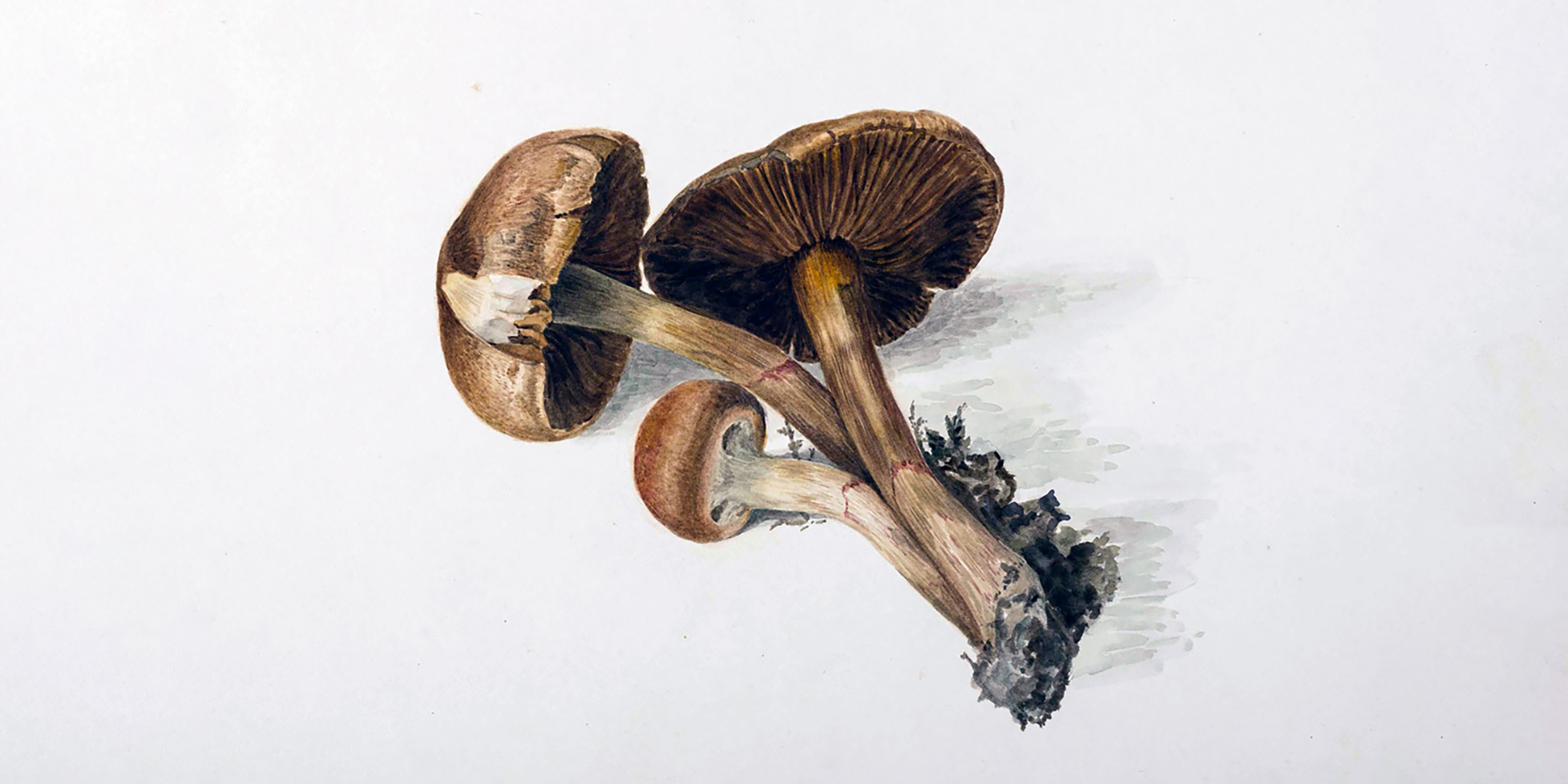Originally published 25 January 1999
No children’s book author is more revered than Beatrix Potter.
Her name has an almost fictional resonance, as if she were herself a literary character: Peter Rabbit, Jemina Puddle-duck, Squirrel Nutkin, Mrs. Tittlemouse, Beatrix Potter.
But she is real enough, and her books continue to be best sellers nearly a century after The Tale of Peter Rabbit was first printed at her own expense after being rejected by six commercial publishers.
Writing and illustrating children’s books was not Potter’s first passion. Her early enthusiasm was natural history, and in particular the study of fungi. If she had been born even a half-century later, we might know her as a mycologist, an expert on mushrooms. She haunted the woods seeking new specimens, which she represented in beautiful and scientifically accurate drawings and watercolors.
Potter was the first person in Britain, and one of the first in the world, to recognize that lichens were composed of two organisms, a fungus and an alga. Her microscopic study of lichens led her to the conclusion that the two organisms lived in a mutually advantageous relationship: symbiosis. The alga took care of photosynthesis for the pair, converting sunlight to useful nourishment, she believed; the fungus gave the alga a safe haven, stored water, and drew minerals necessary for photosynthesis from the anchoring rock or tree trunk.
In the October 1972 issue of Natural History Magazine, Naomi Gilpatrick said Potter “would have liked to discuss her growing portfolio of fungus and lichen drawings with some of the scientists at the Botanic Gardens. She had questions to ask — small, moot points that weren’t touched upon in any of the books she had consulted… Her own observations, made not only in her third-floor study but also on frequent holidays to seacoast towns with her father, a leisure-class photographer, had brought her to the forefront of what was known about lichens and fungi.”
But getting anyone in the exclusively male scientific community to listen to her proved difficult. Her appearances at the Royal Botanic Gardens were met with snubs by the staff. The scientists at the Museum of Natural History at South Kensington gave her short shrift. At best, someone might make passing comment on her bonnet.
“They do not seem to be half-sharp,” she wrote of the scientists in her coded diary.
Admittedly, Potter was not aggressive in her courtship of the experts; she could be painfully retiring on her visits to their gardens and museums, and saved her hurt feelings for her diary. Still, there is a clear sense that it was her gender that barred her way to a full hearing.
At last, through the helpful influence of her uncle, a chemist, she managed to have a scientific paper presented at a meeting of the Linnean Society of London: On the Germination of the Spores of Agaricineae, by Helen B. Potter. Of course, she was not allowed to read it herself; only men were allowed to attend the meetings.
This was in 1897, and Potter was growing increasing weary of her role as ignored supplicant in the house of male science. She turned her artistic talents and careful observations of nature to the production of books for children, who responded with immediate enthusiasm.
The Tale of Peter Rabbit, and the many books that followed, gave Potter a substantial independent income. She married late and happily to a country solicitor who advised her to put her money into land. She became a sheep farmer in the Lake District of England, where her agricultural neighbors were less put off by her gender than the gentleman scientists of London. They elected her president of the Herdwick Breeders Association, the first time a woman had ever held that post.
From babyhood, Beatrix Potter had been interested in the workings of nature. She collected passionately and sketched everything. She wrote: “I do not remember a time when I did not try to invent pictures and make for myself a fairyland amongst the wild flowers, the animals, fungi, mosses, woods and streams, and all the thousand objects of the countryside.”
Once, with her brother, she found a dead fox; she skinned it, boiled it down, and examined the skeleton.
With fewer barriers to her advancement, it is easy to imagine that Potter might have become a professional botanist, or, combining her skills of careful observation and literary expression, a successful naturalist and nature writer. But it was not to be; in the age of John Muir and John Burroughs, nature writing too was an almost exclusively male preserve, jealously guarded.
A glance at the Norton Anthology of Nature Writing tells the story. During the years spanning Potter’s life, women authors are sparsely represented, in spite of the best efforts of the editors to be inclusive. Not until the latter part of the Anthology — well into the 20th century — is it chock-full of women naturalists, including such wonderful contemporary writers as Ann Zwinger, Sue Hubbell, Gretel Ehrlich, and Terry Tempest Williams.
Of course, no one would wish that Potter’s delightful books for children had not been written. Flopsy, Mopsy, Cottontail, and Peter have certainly influenced more lives than her abstruse paper on the germination of mushrooms.
But it is worth remembering that in her choice of career Beatrix Potter didn’t have the opportunities available to many young women today — and the science of her time was the poorer for it.



